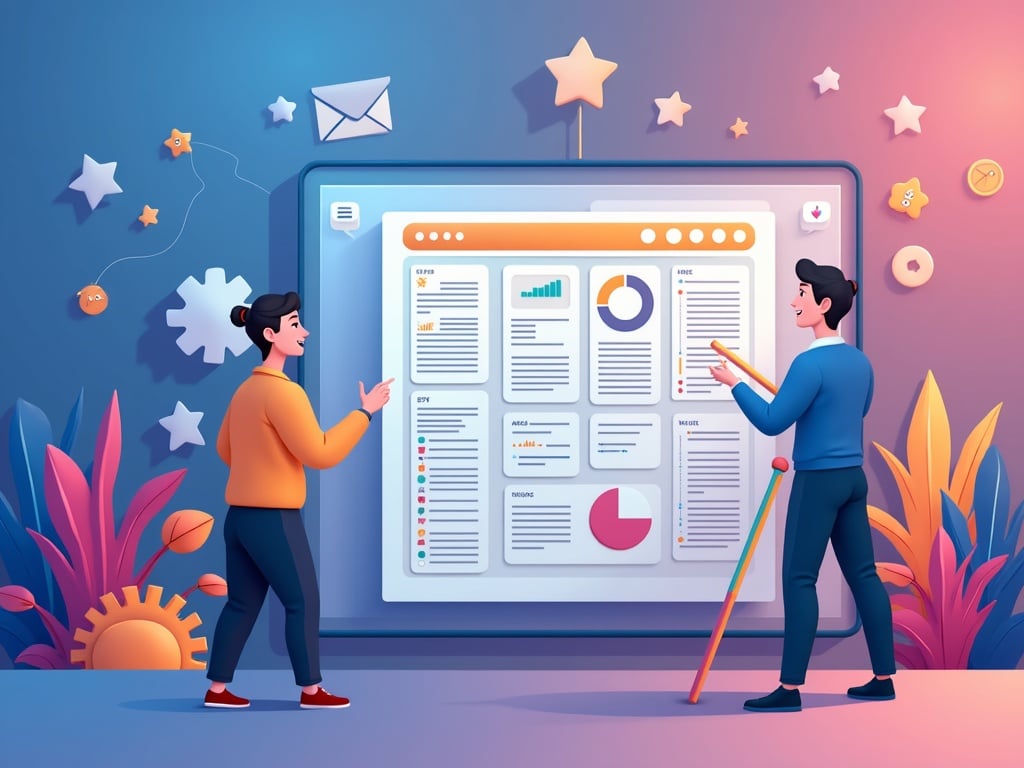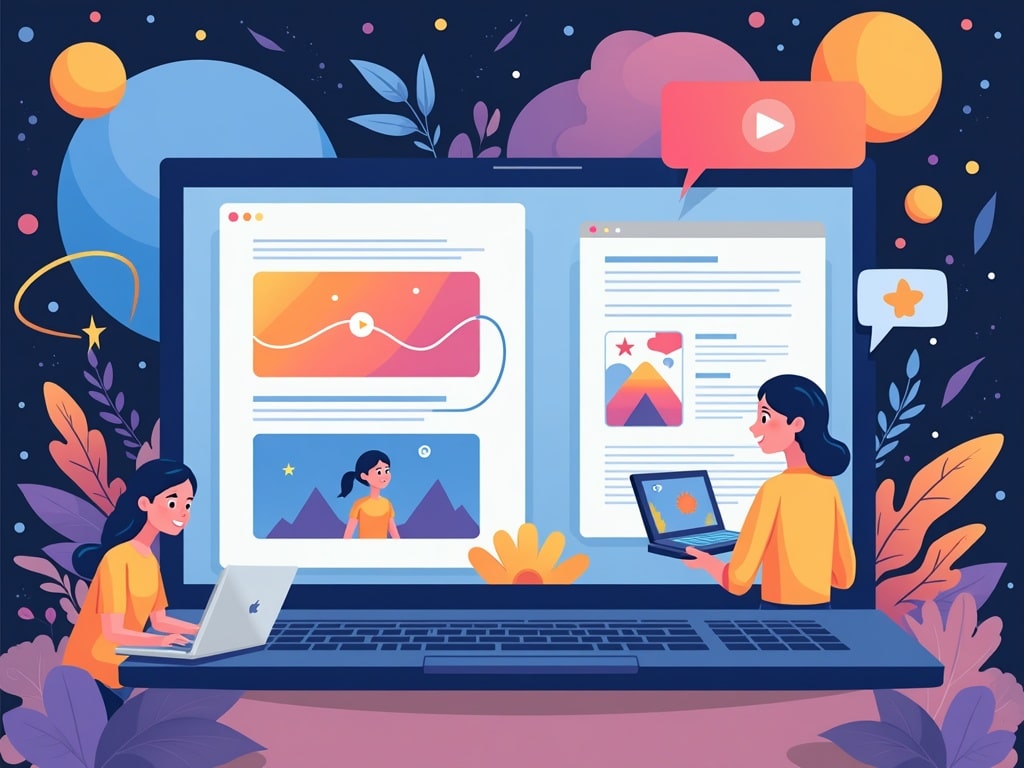Okay, I understand. Here's the HTML output for a long-form article based on your specifications, focusing on the keyword best free prototyping tools, targeting the Tools & Resources category, and aiming for a word count of 2500, with one internal link placeholder and one image placeholder:
Unleash Your Creativity: The Best Free Prototyping Tools for 2024
Imagine holding the future of your app or website in your hands, long before a single line of code is written. That's the power of prototyping. It's the secret weapon of successful designers and developers, allowing you to test ideas, gather feedback, and iterate rapidly without breaking the bank. But with so many options available, finding the best free prototyping tools can feel like searching for a needle in a haystack. Fear not! This comprehensive guide unveils the top contenders, empowering you to bring your vision to life without spending a dime.
Why Prototyping Matters: From Idea to Reality
Prototyping is more than just creating a pretty picture; it's a crucial step in the design process. It's about validating your assumptions, identifying potential usability issues, and ensuring that your final product meets the needs of your users. Think of it as a dress rehearsal for your digital masterpiece.
The Benefits of Prototyping
- Early User Feedback: Get your designs in front of real users and gather valuable insights early in the development cycle.
- Cost-Effective Iteration: Identify and fix problems during the design phase, saving time and money on costly code revisions later.
- Improved Communication: Prototypes provide a common language for designers, developers, and stakeholders to discuss and refine the product vision.
- Enhanced User Experience: Create intuitive and user-friendly interfaces that delight your users and keep them coming back for more.
- Risk Mitigation: Testing assumptions early can prevent building the wrong product.
What to Look for in a Free Prototyping Tool
Not all prototyping tools are created equal. When choosing the right free tool for your needs, consider the following factors:
- Ease of Use: A user-friendly interface is essential, especially if you're new to prototyping.
- Features: Look for tools that offer the features you need, such as interactive elements, animations, and user testing capabilities.
- Collaboration: If you're working with a team, choose a tool that supports collaboration and feedback.
- Platform Compatibility: Make sure the tool works on your preferred operating system (Windows, macOS, Linux) and supports the types of prototypes you need to create (web, mobile, desktop).
- Learning Curve: How much time you will need to learn certain aspects of a tool.
The Top Free Prototyping Tools of 2024: A Detailed Comparison
Now, let's dive into the heart of the matter: the best free prototyping tools available today. Each of these tools offers a unique set of features and capabilities, so choose the one that best aligns with your specific needs and skill level.
Figma: The Collaborative Design Powerhouse
Figma has revolutionized the design world with its cloud-based platform and collaborative features. Its free plan offers a generous amount of functionality, making it a popular choice for both individual designers and small teams.
- Key Features: Real-time collaboration, vector editing, interactive prototypes, component libraries, and auto layout.
- Pros: Excellent collaboration features, web-based, cross-platform compatibility, and a large community.
- Cons: Requires an internet connection, limited storage on the free plan.
- Best For: Collaborative teams, web and mobile app prototyping.
Adobe XD: The Industry Standard Contender
Adobe XD is a powerful prototyping tool from Adobe, known for its seamless integration with other Adobe Creative Cloud applications. While it's part of a larger ecosystem, its free plan offers enough features for many prototyping needs.
- Key Features: Vector-based design, interactive prototypes, voice prototyping, auto-animate, and component states.
- Pros: Integration with Adobe Creative Cloud, powerful animation capabilities, and a clean interface.
- Cons: Limited features on the free plan, steeper learning curve than some other tools.
- Best For: Designers familiar with the Adobe ecosystem, creating visually stunning prototypes.
InVision Freehand: The Digital Whiteboard for Collaboration
InVision Freehand is primarily a digital whiteboard tool, but its prototyping capabilities are surprisingly robust. It's excellent for early-stage brainstorming, wireframing, and collaborative design sessions. While InVision Studio, their dedicated prototyping tool, no longer exists, Freehand provides a valuable alternative for visual collaboration.
- Key Features: Real-time collaboration, drawing and sketching tools, sticky notes, templates, and basic prototyping features.
- Pros: Excellent for collaborative brainstorming, easy to use, and a wide range of templates.
- Cons: Limited advanced prototyping features, not ideal for complex interactions.
- Best For: Early-stage brainstorming, wireframing, and collaborative design sessions.
Marvel: The Simple and Intuitive Prototyping Tool
Marvel is known for its simplicity and ease of use, making it an ideal choice for beginners. Its drag-and-drop interface and pre-built components make it quick to create interactive prototypes without any coding knowledge.
- Key Features: Drag-and-drop interface, pre-built components, interactive prototypes, user testing, and handoff tools.
- Pros: Easy to learn, quick prototyping, and user-friendly interface.
- Cons: Limited advanced features, less flexibility than some other tools.
- Best For: Beginners, rapid prototyping, and user testing.
Proto.io: The High-Fidelity Prototyping Powerhouse (Free Trial Available)
While Proto.io doesn't offer a completely free plan, it provides a free trial that allows you to explore its powerful high-fidelity prototyping features. It's a great option if you need to create realistic and interactive prototypes with complex animations and interactions.
- Key Features: High-fidelity prototyping, advanced animations, interactive components, user testing, and collaboration features.
- Pros: Realistic prototypes, powerful animation capabilities, and a wide range of features.
- Cons: No completely free plan, steeper learning curve than some other tools.
- Best For: Creating high-fidelity prototypes with complex interactions, user testing.

Beyond the Big Names: Other Free Prototyping Options
While the tools listed above are some of the most popular, there are other free prototyping options worth considering, depending on your specific needs:
- Origami Studio: Created by Facebook, Origami Studio is a free prototyping tool for macOS that focuses on creating realistic animations and interactions. It's a powerful tool for experienced designers.
- Pencil Project: Pencil Project is an open-source GUI prototyping tool available for various platforms. It offers a wide range of built-in shapes and stencils, making it suitable for creating wireframes and mockups.
- UI Stencils: While not a software tool, UI stencils are physical templates that allow you to sketch out user interfaces on paper. They're a great option for early-stage brainstorming and ideation.
Choosing the Right Tool: A Practical Guide
Selecting the best prototyping tool ultimately depends on your individual needs and preferences. Here's a step-by-step guide to help you make the right choice:
- Define Your Needs: What type of prototypes do you need to create? What features are essential? What's your budget?
- Consider Your Skill Level: Are you a beginner or an experienced designer? Choose a tool that aligns with your skill level.
- Explore Free Options: Start with the free tools listed above and experiment with their features.
- Read Reviews and Tutorials: Get insights from other users and learn how to use the tool effectively.
- Try a Free Trial: If you need advanced features, consider trying a free trial of a paid tool.
- Start Prototyping: Once you've chosen a tool, start creating prototypes and gathering feedback.
Tips for Effective Prototyping
Once you've selected a prototyping tool, here are some tips to help you create effective prototypes:
- Focus on the User: Keep the user's needs and goals in mind throughout the prototyping process.
- Start Simple: Begin with low-fidelity prototypes and gradually increase the level of detail.
- Test Early and Often: Get your prototypes in front of real users and gather feedback early and often.
- Iterate Based on Feedback: Use the feedback you gather to iterate on your designs and improve the user experience.
- Document Your Process: Keep track of your prototyping process, including your goals, assumptions, and feedback.
The Future of Prototyping
The field of prototyping is constantly evolving, with new tools and technologies emerging all the time. Expect to see more AI-powered features, virtual reality (VR) prototyping, and seamless integration with other design and development tools in the years to come. Embracing these advancements will be crucial for staying ahead of the curve and creating innovative user experiences.
Conclusion: Empowering Your Design Journey
Prototyping is an essential skill for any designer or developer. By leveraging the power of free prototyping tools, you can bring your ideas to life, gather valuable feedback, and create user-friendly products that delight your users. So, explore the tools mentioned above, experiment with their features, and embark on your prototyping journey today. The future of your designs awaits!

